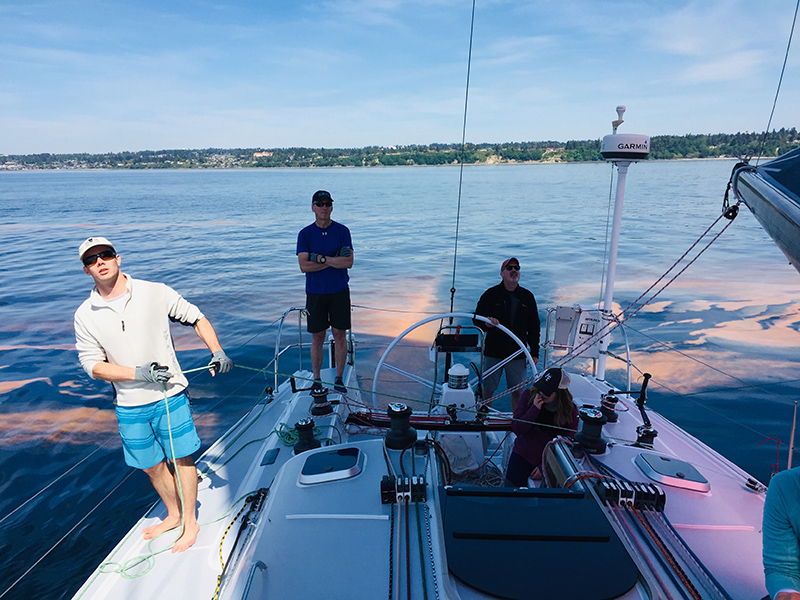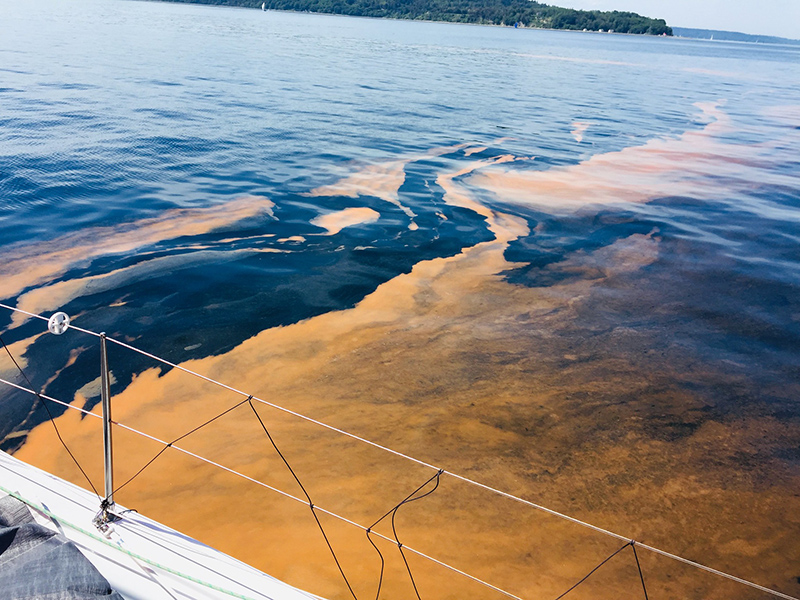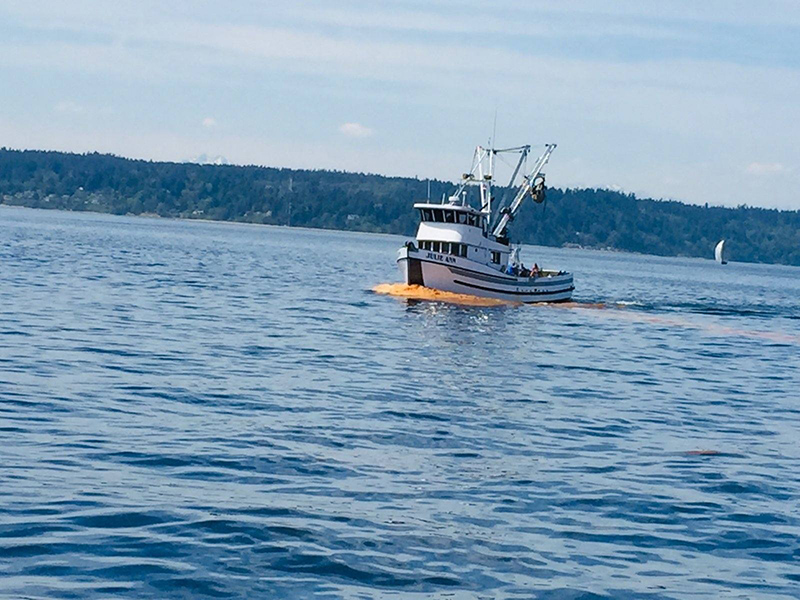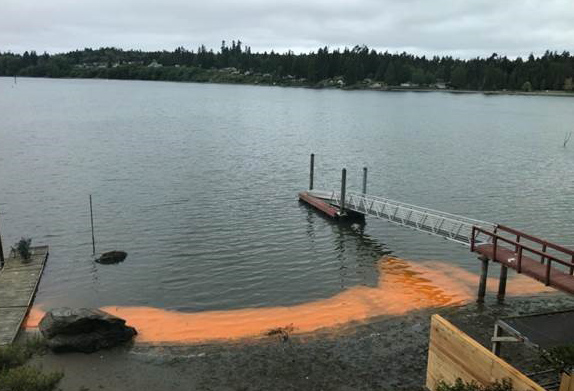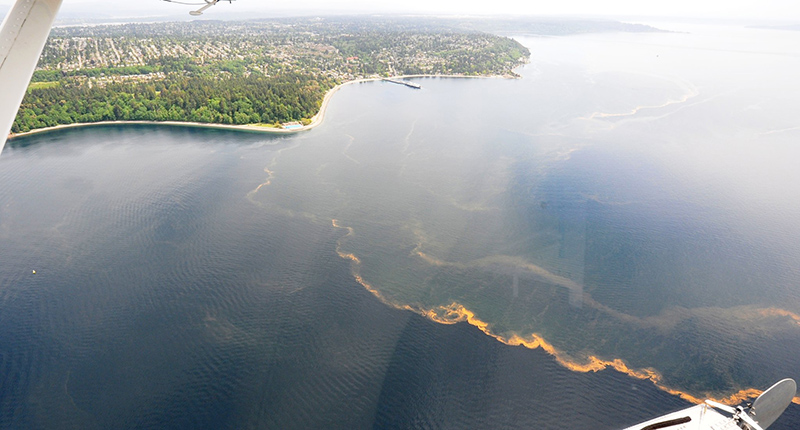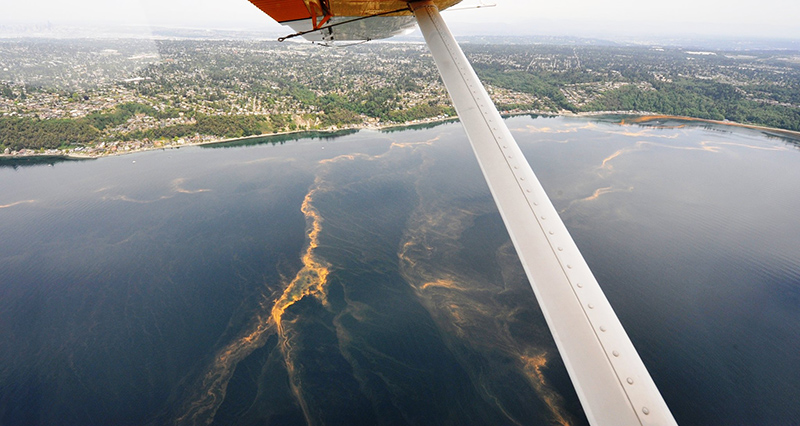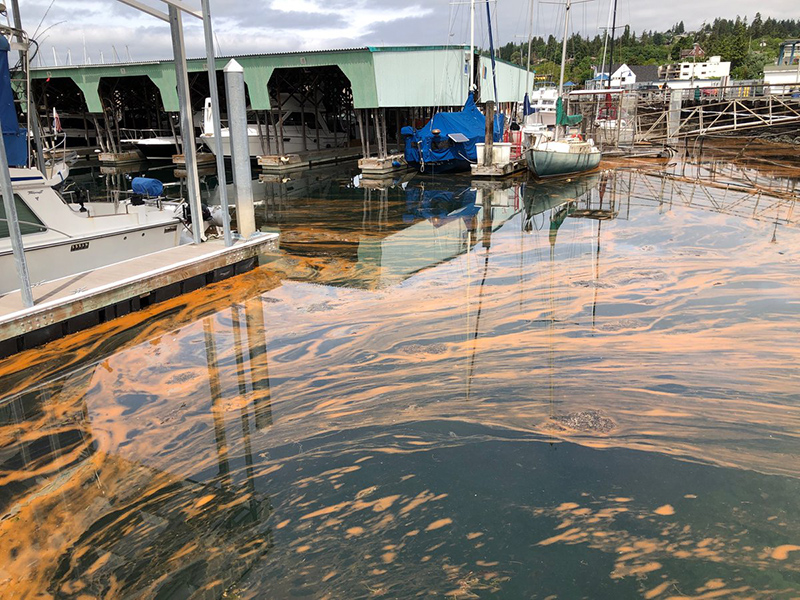Marine algae & plankton
What's that in the water? A large patch of orange, brown, or green in the Puget Sound is likely to be a "bloom," or gathering of marine algae or plankton. These are types of water plants and animals. Learn more about algae and other plankton. Report sightings to our scientists.
Algae facts
Algae blooms vary in color
Algae blooms can appear in different colors ranging from green to red, orange, yellow or brown. Often these colors are from the pigments in different types of phytoplankton that allow them to photosynthesize.
Zooplankton that feed on the phytoplankton can also show as a bloom in the water. Noctiluca blooms are nontoxic and usually appear as a rusty reddish color like tomato soup. These blooms are common in Puget Sound.
For more on Noctiluca, see our publication: POSTER: Physical, Chemical, and Biological Conditions during Noctiluca Blooms in an Urban Fjord, Puget Sound Publication.
Let us know
Contact Dr. Christopher Krembs with reports of bloom sightings so that we can direct our oceanographers to those locations to collect and analyze samples and keep statistical information on their occurrence. Please note the date, time, location, and color of the bloom.
Related links
Contact information
Mugdha Flores
Environmental Assessment Program Communications Manager
mugdha.flores@ecy.wa.gov
360-628-7692


